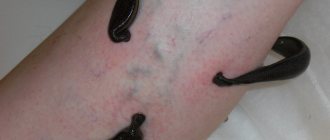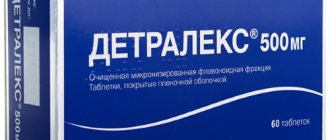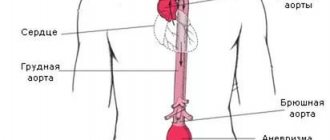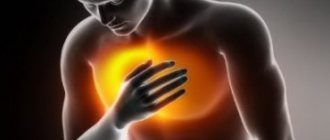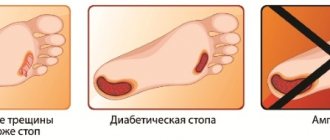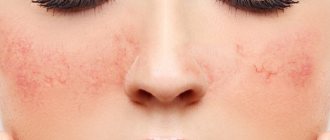Spinal hernia is the destruction of the structure of the intervertebral discs with protrusion of their nucleus. The disease is accompanied by pain and leads to severe and irreversible destruction of the spinal structure, but if detected in a timely manner, it can be treated with conservative methods. You will learn about how to treat an intervertebral hernia and how to prevent its occurrence in our material.
Causes of the disease
Intervertebral discs are located between the vertebrae and act as shock absorbers during movement and heavy loads on the back. The intervertebral disc consists of a core, a jelly-like substance that stores water, and a ring of tendons located around the core. During bending, the disks are compressed and the core is pushed out. When the discs are strong, structural deformations do not occur. But in case of violations, insufficient strength of the bone tissue, the ring is strongly pressed by the core. The ring stretches; this stretching point is called protrusion. This is the first stage towards the formation of a hernia. Over time, under the influence of loads, the ring breaks, and the core falls out, restrained only by the elastic shell. This is an intervertebral hernia.
The reasons for such changes are as follows:
- poor posture;
- working with weights;
- various diseases of the skeletal system (neoplasms, dysplasia, destruction of cartilage tissue);
- spinal injuries;
- excess body weight.
People who lead a sedentary lifestyle are at particular risk of developing a hernia. The fact is that in a sitting position the pressure on the spinal discs is even stronger than when walking or standing. Limited mobility also impedes blood circulation in the muscles, which causes depletion of moisture reserves in the core. People over the age of 30, as well as smokers, are more likely to develop a herniated disc.
Results of treatment of spinal hernia
The integrated application of procedures operates simultaneously in three directions. Pain and other symptoms of intervertebral hernia are eliminated. The causes that led to the development of osteochondrosis and destruction of the spinal disc are eliminated. The process of restoration of intervertebral discs begins. The fallen part of the disc gradually dries out and dissolves. The pressure on the nerve root disappears, thanks to which the pain goes away. Numbness disappears, sensitivity, muscle strength and range of motion in the arm and leg are restored. The innervation and functioning of internal organs (genitourinary, digestive systems) are normalized.
In this case, the shock-absorbing function of the affected disc is completely restored. This treatment technique has repeatedly proven its effectiveness and advantages:
1. High result.
The results of the treatment course are confirmed by control MRI images. More than ten years of experience at the Tibet clinic in Moscow and St. Petersburg shows that the effectiveness of treatment for intervertebral hernias is 96-98%. This means relief, elimination of symptoms and restoration of discs. In the long term, such treatment is much more effective than drug therapy and surgery.
2. No side effects.
The methods used in Tibet are safe and have no side effects. Our doctors apply oriental practices based on modern evidence-based medicine, which guarantees high safety and effectiveness of treatment.
3. Long-term effect.
Treatment in “Tibet” not only restores the spinal disc. It minimizes the risk of new hernias in other segments, as well as hernia recurrence.
Symptoms
A herniated disc has severe symptoms and is accompanied by severe pain. This is because the spinal disc becomes thinner, causing the vertebrae to rub against each other, causing pain. The hernia itself puts pressure on the nerve endings, causing spasms and numbness.
Depending on the area where the hernia has formed, the symptoms of the disease may vary.
Manifestations of a hernia in the lumbar spine:
- severe pain in the lower back;
- numbness in the area where the nerve endings are pinched by the hernia;
- drawing pain from the buttock along the back of the thigh;
- pain during bowel movements, problems with urination;
- numbness of the groin area;
- pressure surges.
Manifestations of hernia in the thoracic and cervical regions:
- pain in the shoulders and upper limbs;
- headache, dizziness, high blood pressure;
- numbness of hands.
Depending on the severity of the disease, the pain may intensify, especially when straining the back or sneezing. Often people with a spinal hernia confuse its manifestations with other diseases. For example, pain radiating to the heart is taken for heart disease, and abdominal cramps are taken for digestive problems.
Goals and rules of treatment
Regardless of the form and degree of development of the pathology, regardless of the category of prescribed therapy, the disease must be treated without fail. Otherwise, there is a risk of encountering local or complete limitation of mobility, which, in turn, leads to disability.
A well-developed and thoughtful treatment regimen will quickly eliminate such unpleasant symptoms as stiffness in movement, severe pain, inflammation, as well as swelling and numbness. To achieve a quick and fairly lasting result, the specialist will prescribe several options for symptomatic treatment. Here are the most effective of them:
- Medicines;
- Manual therapy;
- Hardware therapy;
- Gymnastics and massage.
Treatment methods without surgery
Treatment of spinal hernia can be carried out surgically and non-surgically. Conservative treatment for 2-3 months gives good results, relieves pain and improves the condition of the spinal discs. Treatment of a hernia involves the use of medications, exercise therapy, traditional recipes, physiotherapy, massage and acupuncture.
Drug therapy
To treat a hernia, medications are used to relieve pain, reduce inflammation and eliminate pinching. For this purpose, non-steroidal drugs are prescribed in the form of ointments or injections. Muscle relaxants are used to relieve muscle spasms, this helps reduce pain and normalize blood circulation in the affected area. For severe pain due to a hernia, novocaine blockade is used. The effect of the drug administration lasts up to 20 days. All medications are used only as prescribed by a doctor.
Physiotherapy
Exposure to ultrasound and electrical impulses helps relieve hernia pain and speed up tissue recovery. Physiotherapy treatment is aimed at restoring blood circulation, relieving muscle spasms, reducing pain, and restoring disc hydration.
Physiotherapy
Physical therapy can significantly improve the condition of the spine. It is worth performing exercise therapy for a spinal hernia carefully, without sudden movements and after consulting a doctor.
Exercises:
- Lie flat on your back, place your arms straight behind your head. Pull your knees towards your stomach, tensing your abdominal muscles.
- Lying on your back, pull your legs bent at the knees with your hands to your chest, while trying to reach your chin to your knees;
- Place your right foot on your left knee. Place your right hand behind your head. Smoothly place the knee of your right leg on the floor to your left without lifting your feet. At this time, turn your head to the right side. Repeat in the other direction.
- Get on all fours, place your hands shoulder-width apart and feet the same width. Arch your back outward while lowering your head. Bend your back to the other side and raise your head.
- Lie on your stomach, straighten your legs, throw your straight arms behind your head. Tighten the muscles of your buttocks and abdomen, press yourself to the floor. Slowly raise your arms up, moving your shoulder blades back.
- Lie on your back, rest your palms on the floor, slowly lift your pelvis up, hold in this position for 5 seconds and lower down.
- To warm up the cervical region, sit on a chair, straighten your back, smoothly turn your head to the right and left.
Repeat the listed exercises for a hernia for 5 approaches with short breaks. All movements must be smooth. You can gradually increase the number of approaches to 10.
Folk recipes
The use of recipes based on natural ingredients has a gentle effect on the spine, relieves pain, increases blood circulation and promotes the restoration of discs in the presence of a hernia. Before using any of the traditional methods of treating a hernia, make sure that you are not allergic to the components.
Garlic compress
Chop 1-2 heads of garlic and pour 100 ml of alcohol into them. Leave in a dark place for 1 week. Compresses are made based on the infusion. To do this, soak gauze or soft cloth in liquid, apply it to the area of your back above the hernia, wrap it in a scarf and hold until the pain in the spine subsides.
Comfrey ointment
Take 300 mg of pork fat, 500 g of comfrey root and 300 ml of alcohol. Mix the ingredients and refrigerate until the mixture cools and turns into a thick ointment. Apply it daily to the area of your back above the hernia.
Birch ointment
Take 20 g of birch leaves, chop, pour 200 ml of oil. Leave for 2 weeks in a dark place. Apply to the affected area until the pain from the hernia subsides.
Infusion of cinquefoil root
Take 100 g of cinquefoil root, pour 1 liter of alcohol, leave in a dark place for 20 days. Before use, warm the infusion to room temperature and rub it on your back in the area above the hernia.
Shilajit compress
Prepare a mixture of 1 g mummy, 100 g honey and 100 g fir oil. You will get a thick substance that needs to be applied to the sore area of the back above the hernia and left for 30 minutes. After this, you need to treat the skin with alcohol and apply a warming ointment.
Massage
During the massage, negative pressure is generated in the spine. As a result, for some time the protruded nucleus is retracted to its original place, which allows pain to be relieved. Blood circulation increases, which activates tissue nutrition and speeds up the healing process of the spine.
An important point is that massage is allowed only in the remission stage, when there is no severe pain in the hernia area. During kneading, the effect is on the area near the spine, but not on the vertebrae; after the session, the patient should feel relaxed, no acute pain. You can massage a limb that has become numb due to poor circulation due to a hernia.
Contraindications to massage treatment:
- heart failure, thrombosis;
- skin neoplasms at the site of exposure;
- oncology;
- exacerbation of inflammation.
You can perform a classic massage with light rubbing, kneading and patting movements. Vacuum and hydromassage will also be useful.
Acupuncture
This ancient Chinese treatment method is based on the relationship of various organs with points on the body. If you influence the right points, you can cope with many diseases and strengthen your immune system in general. Acupuncture treatment for hernia is carried out by a specialist as prescribed by a doctor.
General recommendations
It is important for a person with a hernia to avoid strenuous exercise, especially when lifting heavy objects with outstretched arms. Hypothermia is prohibited, as this causes vasospasm and poor circulation. For athletes, squats with a barbell and lunges with a load are prohibited. Parachuting and horse riding are also prohibited.
Frequently asked questions about herniated discs
1 Can a chiropractor repair a hernia?
A herniated disc cannot be reduced. The fallen part of the disc will not return back. Such attempts are not only useless, but also dangerous. The presence of an intervertebral hernia is a contraindication to the use of manual therapy. Therefore, before starting treatment, the doctor at the Tibet clinic must obtain an MRI image. If it shows the presence of a hernia, the use of manual therapy is excluded.
2 How effective is hardware spinal traction for a hernia?
Hardware stretching for a hernia is unacceptable and even more dangerous than manual therapy. It can lead to very serious complications, including paralysis. Limited manual techniques may be used in uncomplicated cases of protrusion that precede a hernia. At the Tibet clinic they are performed only manually. Manual traction (stretching) of the spine helps reduce the load on the intervertebral discs and speed up their recovery. But it is used with great caution, and any hardware methods are excluded.
3 What is the best way to get rid of back pain?
Where is the best place to treat a herniated disc? The easiest and fastest way is not always the best. For intervertebral hernia, this is an epidural block - an injection of lidocaine into the spine. It is much more effective than any pain-relieving ointments, non-steroidal anti-inflammatory drugs (NSAIDs). But acupuncture provides no less analgesic effect. At the same time, it has a healing effect.
Prevention
Measures to prevent spinal hernia are quite simple. Compliance with them will not only prevent the formation of this disease, but also improve overall health.
Measures to prevent spinal hernia:
- avoid strenuous physical activity;
- go in for sports (do exercises, do Nordic walking, do the exercises described in the section on physical therapy);
- give up bad habits;
- normalize your weight and diet;
- undergo a preventive examination with a doctor.
If you discover the first signs of pathology, do not delay, go for diagnostics and begin treatment, since in advanced cases, a hernia can only be eliminated promptly.
Basic treatment tactics
Before choosing an effective therapeutic method, the doctor prescribes several specialized studies. Only after this will he be able to choose the optimal and, most importantly, effective treatment option. Consultation with a professional is very important, as for some patients surgery will be the only option. The cause may be not only an advanced form of the disease, but also contraindications to the use of medications, individual intolerance to the main medicinal components.
If there are no problems or contraindications, if the disease has not reached a serious stage of development, if the patient’s life is not in danger, the doctor will prescribe the following conservative treatment options:
- Laser therapy;
- Effective physiotherapy;
- Modern nucleoplasty;
- Home treatment;
- A special medication course.
Without exception, all the proposed methods have certain limitations and clear contraindications, therefore consultation with a doctor is extremely necessary.
Minimally invasive surgery
Methods for treating varicose veins without surgery also include minimally invasive surgery - a method of performing operations without making incisions on the human body. It is usually carried out using small punctures or using natural physiological openings on the body. It is a successfully used alternative to traditional surgery. In the treatment of varicose veins, surgical interventions have become the main method - phlebectomy, sclerotherapy, etc.
Laser therapy
Laser treatment has become firmly established in modern medicine precisely due to the fact that surgical intervention with its help has become possible to carry out without violating the integrity of the patient’s skin.
This method is called endovasal laser coagulation (you can also find the name endovenous obliteration; this is the same thing).
Laser coagulation includes several stages:
- Preparation - shaving your legs, changing into sterile clothes (disposable suits and gowns for operations are now sold in almost every pharmacy);
- Carrying out a duplex scan, during which a phlebologist or surgeon determines the boundaries of the affected vessels and the places where the venous valves are located, and then marks them with a marker on the patient’s skin;
- The marked area is disinfected and local anesthesia is administered;
- A small puncture of the skin and superficial vein is made;
- A catheter with a light guide is inserted into the lumen of the vessel;
- Tumescent anesthesia is performed - a drug containing adrenaline and a low concentration of anesthetic is injected directly into a vein. In addition to pain relief, the procedure aims to protect nearby tissues from overheating when exposed to the laser, narrowing the diameter of the vessel.
- Coagulation is carried out - “welding” the vessel as if by welding;
- After completing the procedure, which lasts from 30 minutes to one hour, a patch is applied to the puncture site.
- The final step will be to tightly bandage the leg with an elastic bandage or put on compression stockings.
The procedure is almost completely painless. Upon completion, the patient can immediately go home.
Folk remedies
All options and methods of therapy presented to your attention can be effectively supplemented by the use of traditional recipes. Optimal analgesic and inflammation-relieving results can be achieved by using these techniques:
- Honey compress. To prepare it you will need to take 3-4 aloe leaves, 200 ml of regular vodka and 100 grams of natural honey. The plant is passed through a meat grinder and squeezed to obtain juice. Honey and the required amount of vodka are added to it. Everything is mixed and left to infuse for a day. The mixture should be soaked into gauze and applied tightly to the inflamed area for about an hour. Treatment must be carried out until the composition runs out.
- Comfrey-based tincture. You will need to take three pieces of pre-dried plant root, 500 ml of vodka and 10% dimexide. The roots must be thoroughly crushed and filled with vodka. After two weeks, you need to add a pharmaceutical drug to the solution, previously diluted in a proportion of 10 ml per 90 ml of water. The product is rubbed into the area where the affected vertebra is located. To enhance the positive effect, the rubbing process should be done using a small piece of felt. Thanks to this, there will be an improvement in overall blood circulation, based on massage movements and a warming effect.
These techniques can be alternated with each other, or they can be carried out in courses one after the other. If you use them as an additional therapy to drug treatment and physical therapy, you can get a fairly quick positive effect.
With any form of therapy, the patient will be required to reduce the load on the spine and wear a special corset. It is important to follow a diet and completely eliminate alcohol. In the absence of exacerbations, it is necessary to go swimming and perform simple physical exercises every day.
Hirudotherapy (treatment with leeches)
This method is good for its accessibility and simplicity. Leeches, specially grown for medicinal purposes, are taken out of the jar and placed in those places where venous nodes and blood stagnation occur.
After the leeches are absorbed into the skin, particles of their saliva, which has healing properties, get inside. You just need to wait a while, and the satiated worm will disappear by itself.
Treatment with drugs
If a vertebral hernia is diagnosed, treatment without surgery automatically involves the use of modern medications. The course begins with a diagnosis and consists of taking analgesics, muscle relaxants, and non-steroidal medications aimed at eliminating inflammation. Modern chondroprotectors are mandatory to be prescribed, which will promote the regeneration of cartilage elements.
Painkillers and strong anti-inflammatory drugs
Particular attention in the treatment of pathology is paid to drugs in this category. It is necessary to relieve pain as early as possible in order to exclude psycho-emotional disorders. Until the exacerbation is relieved, the patient is shown bed rest, avoiding sudden bends and turns. You can eliminate discomfort and stop the development of complications using the following analgesics and modern NSAIDs:
- Diclofenac, Ibuprofen, Piroxicam are modern non-steroidal anti-inflammatory drugs. Along with eliminating inflammation, they are characterized by antipyretic and unique analgesic effects. These drugs are characterized by a fairly large number of side effects, so medical supervision is mandatory.
- Lornoxicam – has a pronounced analgesic effect. The drug promotes the production of endorphins and relieves pain so effectively that it is classified as a strong opiate substance.
- Meloxicam is necessary to reduce pain if a person has problems with the gastrointestinal tract.
Ibuprofen
Piroxicam
Diclofenac
Meloxicam
Drugs in this category are produced not only in the form of injections and tablets, but as gels and medicinal ointments.
Muscle relaxants
The appearance of fairly strong pain is often caused by compression of the nerve roots. This process occurs during the period of muscle contractions. To eliminate this phenomenon, doctors advise using drugs in this category.
The most common of them are the medications Tetrazepam, Mydocalm, Tizanidine, Diazepam. If the tablets are used simultaneously with NSAIDs, the muscle-tonic sign will quickly disappear. The total treatment time with muscle relaxants is 4 weeks. Optimal mobility of the spine can be achieved by simultaneously performing special exercises.
Vascular drugs
When deciding how to cure an intervertebral hernia at home with the help of drug therapy, experts pay attention to the use of special vascular drugs. To eliminate significant circulatory problems in the spine, the following medications are prescribed:
- Pentoxifylline is taken one tablet 3 times a month;
- Berlition is prescribed for the purpose of complete cell restoration. The drug significantly improves blood circulation and is also characterized by an anti-ischemic effect;
- Actovegin is able to have an antioxidant and antihypoxic effect on the body. It contains microelements that seriously improve basic metabolic processes in the body.
During an exacerbation of the pathology, the inflamed area should be treated with special means for external local use. After the acute manifestations of the pathology are removed, the doctor prescribes procedures such as electrophoresis, acupuncture and other physiotherapeutic measures.


